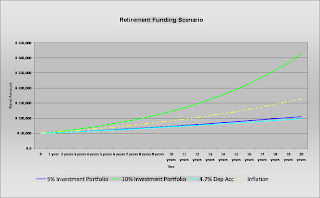Firstly, we never ended up buying Invicta Holdings Ltd (IVT). This does not mean that it is no longer an attractive investment however. The general feeling is just that we should not be rushing into any new long term buys, or investments, before we have some certainty about what is happening in the United States - in terms of the fiscal cliff - as well as have some indication that the Chinese economic recovery is sustainable. Once again we reiterate that we are waiting for the opportune moment to present itself.
Turning our attention to the shares that we did in fact buy, the following comes to light (yesterday's closing prices 10/12/2012):
Please click on the ticker in brackets to see the original investment case.
Turning our attention to the shares that we did in fact buy, the following comes to light (yesterday's closing prices 10/12/2012):
Please click on the ticker in brackets to see the original investment case.
Share
|
Bought
|
Current
|
% Move
|
Coronation (CML)
|
R29.50
|
R38.45 (+R1.11 divi)
|
34.1%
|
MTN (MTN)
|
R155.00
|
R170.00
|
9.7%
|
Brait SE (BAT)
|
R28.00
|
R36.11
|
29%
|
Cashbuild (CSB)
|
R150.00
|
R147.50 (+ R2.73 divi)
|
0.2%
|
Imperial (IPL)
|
R185.00
|
R186.01
|
0.5%
|
When looking at these shares, one has to consider that nothing as fundamentally changed with them. They are all still very good companies and the investment cases are still strong for each of them. Some have done better than others it is true, however they true performance will come out over time. Long Term investing is what generates the biggest profits at the end of the day.
We have also been looking at a few new shares that we are considering buying and will be posting some investment cases on them soon.
We have also been looking at a few new shares that we are considering buying and will be posting some investment cases on them soon.


